
Convergence
Academic Psychology Meets Jungian Typology
Download or listen to this article
Carol Shumate and Richard Owen, December 28, 2021

Although academic psychology has long exhibited a prejudice against psychoanalytic theories (Luyten et al., 2006), personality researchers initially adopted Jung’s type theory and the tool used to assess it, the Myers-Briggs Type Indicator® (MBTI®) (Murray, 1990; Capraro & Capraro, 2002). Then the creation of the five-factor model (FFM) by Paul T. Costa Jr. and Robert R. McCrae, and their comparison of it to the MBTI (McCrae & Costa, 1989), led researchers to discard typology in favor of the FFM, now called “the Big Five,” on the rationale that the five factors were arrived at “empirically.” Academic psychologists tend to view that shift as a revolution. However, instead of viewing type and trait models as competing paradigms, it may be more accurate to view them as complementary because the conceptual divide has been shifting, and many trends in academic personality research now reflect the fundamental principles of Jung’s type system.
The major criticism of Jung’s typology by academic personality researchers, one that was intensified by the appearance of the five-factor model, is that it is unscientific, but this criticism is based on a flawed definition of science, one that academic researchers themselves have begun to revise. Jung (1916/1966) also wanted to make psychology a science, but he acknowledged that a psychology of the individual was “a contradiction in terms”: “A psychologist who professes a ‘scientific’ individual psychology is simply denying individual psychology” because, as he observed, “it is only the collective element in the psychology of an individual that constitutes an object for science; for the individual is by definition something unique that cannot be compared with anything else” (¶ 484). In spite of the inherent limitations of individual psychology, and perhaps even because of them, Jung created his typological system to identify the grossest features of personality that are responsible for the most common worldviews that individuals adopt. Jung proposed that the multiplicity of personalities in the population was a consequence of evolutionary biodiversity, a way to ensure survival of the human species. Although that diversification advances civilization, it has an unintended consequence: conflict. To address the problem of interpersonal conflict, Jung tried to identify the foundational mentality shared by everyone before differentiation of traits and diversification occurs. Therefore, his type theory is a natural precursor of trait theories. It enables a macroscopic perspective on personality that complements the detailed microscopic view of trait studies.
The entire concept of what constitutes a science of psychology is beginning to shift toward Jung’s position, and now key aspects of Jung’s type system are being corroborated by academic experimental research. Many of Jung’s methods in designing his typology were originally criticized and avoided by academic scientists—induction, idiographic research, and hermeneutics—but they have been gradually resurrected by research psychologists.
Academic researchers may not acknowledge Jung’s typology, but convergence appears inevitable. It should not be concluded from such convergence that Jungian typology is superior to other models of personality, nor that this type research is superior to trait research. Rather, it suggests that Jung’s typology was more insightful than has heretofore been recognized, either by trait researchers or by Jungian scholars, and may have been a latent influence leading to contemporary advances. At least, it warrants inclusion by researchers as an additional perspective on personality, one that broadens the existing paradigm.
The Great Divide

Many aspects distinguish one paradigm from another, forming a “disciplinary matrix” (Kuhn, 1977) that includes the metaphors/analogies, models, and exemplars inherent in the paradigm. There may be key differences in ontology (possible types of “thing”), epistemology (perspectives on knowledge), methodology, and method between paradigms (Scotland, 2012). Scientific communities form their group identity around the possession of a common paradigm and can have difficulty understanding others due to the deeply entrenched nature of their respective worldviews. Notwithstanding Kuhn’s mid-century assessment of the social sciences as pre-paradigmatic, the type and trait views of personality are underpinned by just such paradigmatic differences (see Figure 1), the exploration of which is important in reconciling differences between groups that specialize in each of these views. At present, neither side completely understands the other. Ironically, Jung created his type system precisely to address these kinds of conflicting worldviews, and Isabel Myers together with psychologist Mary McCaulley created the MBTI to bridge the divide by providing a psychometric tool for use in research.
In addition to contributing to significant advances, psychology’s aspiration to be a science has imposed some restrictive methodological standards. In the social sciences, only experiments based on large databases of anonymous subjects can simulate anything approaching the statistical rigor of the hard sciences. For this reason, the discipline of psychology has come to prefer the nomothetic method of research over the idiographic. The idiographic approach explores variation within a person over time (intraindividual variation) using in-depth assessments (Beltz et al., 2016) whereas the nomothetic approach examines the variation between or across people (interindividual variation), often with a single measurement occasion. The idiographic approach works with individuals and is, therefore, time- and labor-intensive whereas nomothetic research can be performed on large, anonymized, randomized subject populations. Although academic psychologists do not deny the validity of idiographic research, the nomothetic method enables the prevailing statistical research paradigm within the constraining boundaries of time and funding. Following this trend, statistical type research using the MBTI has also taken a nomothetic approach, but the underpinning theories of type research were influenced by Jung’s work, which was derived predominantly from idiographic clinical experience with individuals, often over long periods of time. In addition, typology has been elaborated by successive generations of analysts and clinicians whose work is necessarily idiographic in nature, and that has become another mark against type theory.
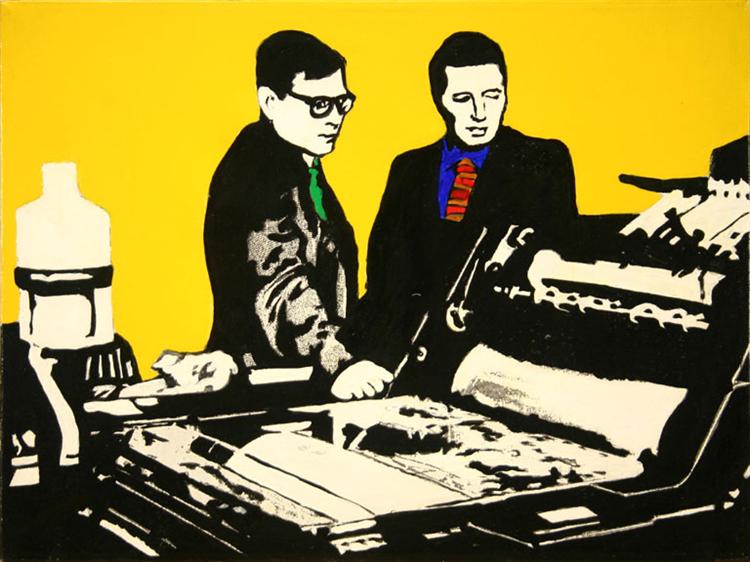
Beginnings of Convergence
Although the five factors and the eight function-attitudes may appear incompatible, there is evidence that the two streams of thought overlap more than previously expected. One generally unacknowledged area of convergence relates to the factor of Neuroticism in the Big Five, which enables researchers to predict dysfunction. The MBTI instrument is often criticized for lacking a scale for Neuroticism. Notwithstanding the fact that typology was created to be neutral, trait-agnostic, and non-diagnostic, some versions of the MBTI assessment form include additional items intended for clinical or counseling purposes. The earlier Form J contained an extended computer-scored Type Development Indicator (TDI) that consisted of 20 Expanded Analysis Report (EAR) subscales and seven Comfort-Discomfort (C-D) sub-scales (Center for Applications of Psychological Type, n.d.). A study by Donald A. Johnson (1993) showed correlations of .55 to .65 between facets of NEO-PI Neuroticism and some of the C-D scales. Leading developers of the MBTI, Myers et al. (1995), urged caution over relating the C-D scales to Neuroticism, but their main concern was the misuse of the instrument to identify dysfunction. Whereas trait Neuroticism is almost universally seen as maladaptive at high levels, the C-D scales were presented as pairs of qualities (such as defiant-compliant) with the assumption that each one could be helpful for some types and problematic for others. The sensitivity and potential mental health issues around the content meant the Comfort-Discomfort scales were aimed at practitioners who were clinicians or counselors, and this aspect carried through to the later MBTI Step III. However, the EAR and C-D questions were deliberately removed or left unscored as research items in other general-use forms of the MBTI. Additionally, a group of industrial/organizational psychologists (Harvey et al., 1995) performed exploratory and confirmatory factor analyses on the unscored research items and found that some of them could indeed serve as indicators of Neuroticism, even though the pool of questions would need broadening to capture it more reliably. Such evidence confounds the criticisms that imply that the MBTI lacks a Neuroticism dimension due to the inferiority of its underlying model.
Another aspect of unacknowledged or inadvertently converging worldviews concerns Jung’s model of the psyche. The feature that most distinguishes Jung’s type system from the Big Five and most of its offshoots is its polarized nature, according to which the unconscious functions oppose the conscious functions. Recently, however, doctoral research on the five factors done by Stewart Desson (2017) at the University of Westminster has found that negatively correlated opposites are hidden or implied within the high and low ends of the Big Five when they are measured independently. Polarity was the basis of Jung’s view of the psyche as a self-regulating system, according to which any psychological movement would produce an equal and opposite movement. This understanding enabled Jung to make the startling discovery that exerting too much energy in one direction caused a complete reversal whereby the mental function in use ceded to its opposite.
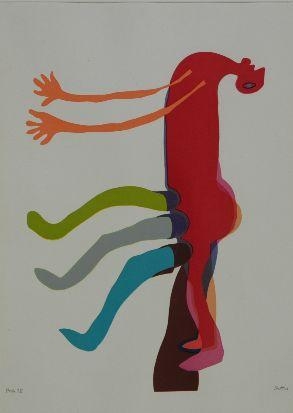
Jung’s concept of a dynamic psyche makes scientific absolutism impossible because the psyche cannot be geographically isolated or temporally frozen like biological organisms or physical objects. Recognition of this limiting condition has been percolating through the discipline of psychology for decades. Stanford psychologist Lee Cronbach (1975) observed: “Rarely is a social or behavioral phenomenon isolated enough to have this steady-state property” which physical systems exhibit (p. 123). For that reason, Cronbach concluded, “Too narrow an identification with science … has fixed our eyes upon an inappropriate goal” (p. 123). Jung’s typology enabled the identification of underlying tendencies, that is, the most probable areas of inflation or deflation in the psyche, the areas where the individual is most tempted to be purist and dogmatic. Jung came to view the ideal of scientific purity not merely as unachievable but as a source of psychological dysfunction itself because any absolute position would precipitate compensatory reactions by the unconscious. Many prominent research psychologists have come to similar conclusions about the discipline of psychology. University of Chicago psychologist David Nichols (1993) rejected the idea that “an idealized positivist version of classical physics should be the model for all sciences” (p. 51) and argued for an avoidance of extremes, “the extremes of pretending that these fields offer us nothing of relevance or that they establish valid norms of success that we can hope to approach only by slavishly mimicking their methods” (p. 58). It must also be acknowledged that the first of these positions, the pretense that quantitative methods offer nothing of value to analytical psychology, characterizes many adherents of Jungian typology. Jung saw the temptation of extremes as inherent in human psychology, another consequence of biodiversity, and his type system purports to map the extremes that delineate the psyche.
To illustrate the intrinsic excesses of psychological type, Jung (1921/1971) compared his mental functions to the four points of the compass: “just as arbitrary and just as indispensable” (¶ 958). The compass metaphor enables any number of subdivisions of the circle, any number of directions of travel. Jung argued for the logic of the system’s basis in the number four, but the number of functions or types matters less than their polarized nature. A type assessment need not measure amounts of a function any more than one would measure amounts of a direction like north or south. The putative use of a function dictates not the amount but the direction of the movement of libido, or psychological energy. Of course, eventually the duration of pursuit of a direction implies a quantity, but Jung viewed the direction of travel to be more significant than the length of travel: an individual who habitually veers northward moves in a mental rut of which he is unaware. The compass metaphor also accommodates a key principle of Jung’s understanding of personality—its infinite expandability. The expansiveness of his type system reflects Jung’s purpose for his typology: to encourage an expansion of the personality to include multiple perspectives—if it were possible, to accommodate all perspectives, all directions, and all personalities within the Self. In that regard, Jung’s model is a typological equivalent of the Big Five, which claims to encompass the psyche’s most significant traits.
The Empire of Empiricism
The criticism that Jung’s typology is unscientific is largely based on an accusation that it is “not grounded in empirical data” (Stein & Swan, 2019, p. 3), by contrast with the Big Five which originated in pure observation, untainted by theory. This criticism reflects a common misunderstanding in academic psychology as to what constitutes science, an equation of empiricism with science. One of the definitions of “empiricism” by the American Psychological Association (APA) is “the view that experimentation is the most important, if not the only, foundation of scientific knowledge” (American Psychological Association, n.d.), and this view seems to be shared by most trait psychologists.
Fortunately, that misunderstanding is being eroded. The Big Five’s chief point of distinction, its atheoretical source, is now acknowledged to be its greatest deficit. Many psychologists have pointed out that there is nothing scientific about experiment unguided by theory. Berkeley psychologist Jack Block (1995) discussed this shortcoming of the five factors at length. Subsequent researchers acknowledged that the model is “a descriptive taxonomy” without a theory (John & Srivastava, 1999), and some have tried to fill that gap by retrofitting a theory to the five factors (DeYoung, 2010). In the process, Costa and McCrae’s term five-factor model morphed into Block’s five-factor approach (FFA), which was replaced by the moniker the Big Five, suggesting a growing realization that pure empirical observation is not by itself scientific: only theory and experiment together can produce scientific results. In spite of this growing awareness, a decade-long review of psychology articles published last year found that only 15.33% “explicitly claimed to test predictions derived from theories” (McPhetres et al., 2020, p. 5). This analysis was carried out by research psychologists at eleven different universities in North America, Britain, and Europe.
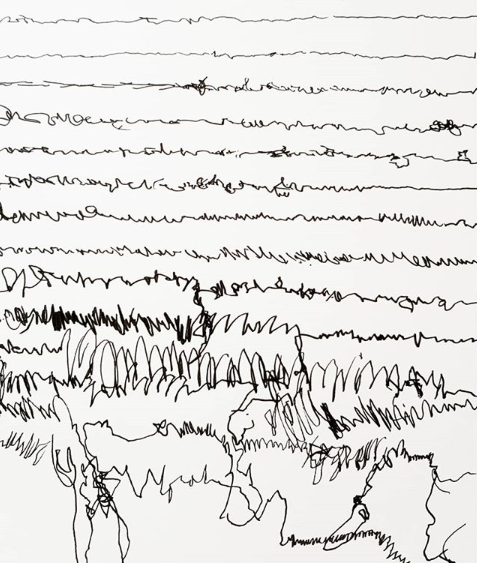
One of the most replicable aspects of trait research, the finding that introversion predicts dysfunction (Wilt & Revelle, 2009), is now being modified by many psychologists, notably, Brian Little, winner of the 2020 Henry A. Murray award from the Association for Research in Personality. Little’s research conclusions resonate closely with Jung’s original concepts; he asserts that individuals can have a comfort zone that is introverted or extraverted, yet they can draw on the opposite mode when it is called for, although such “acting out of character” can take its toll on energy (Little, 2008, p. 1251). In addition, Little’s terms “biogenic introvert” and “biogenic extravert” (p. 1248) appear to confirm Jung’s idea that a preference for one side or the other is intrinsic, although Jung’s typology has been aggressively criticized on this ground (Stein & Swan, 2019, p. 3). Many other researchers have contributed to free trait theory or situation-free trait theory, with the result that the canonical position on introversion is becoming more nuanced, much as Jung’s own positions were.
Academic psychology’s assertion of the superiority of the trait view, based on a conflation of science with empiricism, is not only unscientific but also ahistorical as it neglects a point of convergence of the two paradigms found in the original meaning of the term empirical. Like much of our intellectual heritage, the history of empiricism can be traced back through Western philosophy. Plato was something of an anti-empiricist, seeing that which was known through the senses as delusion. He decried the foolishness of the body as a distorting medium that distracts us from knowledge and truth (Russell, 2004). Descartes was also skeptical of the senses, and with his famous cogito (“I think therefore I am”) he ushered in an era with a much more explicit and prominent focus on theory of knowledge. The post-Cartesian rise of empiricism and its associated assumptions about reality that are taken for granted in the social sciences can be attributed to the enduring influence of British philosopher John Locke (1632–1704), considered “the founder of empiricism, which is the doctrine that all our knowledge (with the possible exception of logic and mathematics) is derived from experience” (Russell, 2004, p. 556).
However, Locke’s original concept of empiricism has been distorted. Locke thought that there were two sources of experiential knowledge: “sensation” (the input of the senses) and “internal sense” (perception of the operation of our own mind, i.e., introspective reflection). This second source of knowledge, “internal sense,” was diminished and eventually driven out of psychology by the behaviorist movement (Watson, 1913). It is this introspective and phenomenological kind of experience that Jung elicited from his patients and also from his own self-examination. These experiences were the sources of information, alongside his discussions with colleagues and his personal relationships, which informed his work on typology (Jung, 1921/1971, pp. xi–xii). Jung (1921/1971) always claimed that his ideas were grounded in empirical data:
I must confine myself to a presentation of principles which I have abstracted from a wealth of facts observed in many different individuals. In this there is no question of a deductio a priori, as it might appear; it is rather a deductive presentation of empirically gained insights. (¶ 4)

The general prejudice of Western intellectual thought towards knowledge derived from the senses is nowhere more apparent than in the meaning of the word “sensible.” According to its Latin root, the word originally meant something that is perceptible to the senses; for instance, to say that something was “sensible” meant that it was tangible and perceptible. This use of the word was present in old philosophical writing (Russell, 2004, p. 44) at least until the 14th century (Online Etymology Dictionary, n.d.). But modern usage dictates a different meaning: “based on or acting on good judgment and practical ideas or understanding” (Cambridge Dictionary, n.d.). The implication of this definition is that gaining knowledge from the senses is wise, prudent, and beneficial. Presumably, therefore, ignoring the senses is foolish—a direct contradiction of Plato’s position. Jung’s typology redeemed Plato’s original concept and the value of the intangible by including intuition as a perceiving function and introversion as a legitimate attitude.
In sum, the claims that typology is not grounded in empirical data could arguably be erroneous due to a revision of the classical definition, one that excludes introspective reflection as a source of empirical data. By Jung’s standards, such a definition represented a move towards sensationalism. The creators of the Big Five defined traits as “endogenous basic tendencies that give rise to consistent patterns of thoughts, feelings and actions” (McCrae & Costa, 2003, p. 204), which shows that those who would deny introspective reflection any empirical validity would also be denying some of the self-report content of thoughts and feelings, that is, the portion that is only known to oneself internally and not demonstrated externally, either by verbal or non-verbal expression.
What is rarely acknowledged by academic personality researchers is that some aspects of the type and trait paradigms that lead to tension have their analogue in the hard sciences as well, where they form the battleground of a long and enduring debate, such as the focus on theory versus experimentation. Experimentalists can make a hundred small observations a week whereas theorists may create only one or two viable theories in a lifetime. Peter Higgs, the Nobel Laureate for whom the Higgs Boson particle (the “God particle”) is named, experienced this bias when he published his seminal work in two articles. His first article laid out a mathematical critique of the work of another physicist while his second article proposed a theory to explain his results (Sample, 2007). The journal Physics Letters published the first mathematical article but rejected the follow-up theoretical article, saying it had “no obvious relevance to physics” (Green, 2013). Higgs was forced to publish his groundbreaking theory in a different journal.
The twin occupations of theory and experiment correlate roughly with induction and deduction. Jung used induction to infer a theoretical framework from his observations and therapeutic work with people, and he used deduction to test and refine these theories in his analytical work; however, it was his use of inductive methods that became the defining reason for his exclusion from the annals of psychology, as Raya Jones (2013) observed (p. 414). Modern academic psychology often recognizes only the deductive testing of predictions from hypotheses (known as hypothetico-deductive reasoning) even though the creation of those hypotheses involves induction to varying degrees. Inductive logic has found useful applications in, for example, “computer based artificial intelligence systems that perform inductive inferences in such domains as medical diagnosis” (Hawthorne, 2021). Nevertheless, induction continues to be marginalized as a legitimate scientific method in many quarters. A prominent example of such marginalization occurred at the Centers for Disease Control (CDC) during the early days of the 2020 Covid-19 pandemic, documented by journalist Michael Lewis (2021), whose account illustrates the peril of excluding one side of the theory/experiment, induction/deduction divide. In his book The Premonition: A Pandemic Story, Lewis described how the CDC was flummoxed by the prospect of recommending tests, treatments, or vaccines for an unknown virus. Obviously, no experimental evidence of efficacy could be provided to support the proposed vaccines, and only experiments could show the kind of statistical data that the CDC liked to base judgments on (deduction). The only “evidence” available at the outset of the pandemic came from computer simulations:
The people at the CDC thought that [computer models] had nothing to offer, but they were missing the point. They too used models. They too depended on abstractions to inform their judgments. Those abstractions just happened to be inside their heads. … Experts made all sorts of assumptions about the world, just as computer models did, but those assumptions were invisible. (Lewis, 2021, p. 85)
Such a passage could have been written by Jung himself, for it describes the kind of one-sidedness that Jung’s Psychological Types was intended to expose and rectify.
Nevertheless, MBTI theory has itself to blame for much of its ostracism by the academy. Data can be classed into various kinds, qualitative (nominal and ordinal) and quantitative (interval and ratio) (Stevens, 1946), and it could be said that the MBTI produces ordinal data: ranking or ordering of qualities. Each question of the instrument is constructed in a way that forces one to identify which of a pair of statements is more natural for oneself. The combined output is used to determine one’s natural inclination in each of four pairs of areas of psychological functioning, introversion or extraversion (E/I), sensing or intuition (S/N), thinking or feeling (T/F), and judging or perceiving (J/P). However, despite the qualitative nature of the questions and output, the creators of the MBTI chose to calculate raw “scores” from the responses and then to use them for displaying results with a numerical and visual clarity index and also for statistical analysis of the instrument for reliability and validity. Presumably the purpose was to fit in with the standards set by trait instrument development so that type researchers could run the statistics that would help them get accepted. Ironically, this practice has had a destructive effect: psychometricians treat the results as quantitative.

Trait psychologists often take the quantitative assumption even further by using the word “measurement,” a variant of which is embedded in the word “psychometric.” Some academic psychologists question whether psychometry is a legitimate tool for investigating personality at all. Joel Michell claimed, “The hypothesis that some psychological attributes are quantitative has never been tested” (2000, p. 239) and even challenged the idea that psychometrics is a branch of science (2008, p. 200). Statistician Günter Trendler (2009) argued that psychology is operating with “a flawed conception of measurement” (p. 579) because psychological phenomena do not satisfy even the first condition of measurement, namely, quantities of equal magnitude. In fact, the term psychometrics may be largely metaphorical. Psychologist Franklin Berry (1984) described the work of pragmatist philosopher Stephen Pepper on root metaphors and how deeply such analogies affect our interpretation of concepts. The root metaphor of trait psychology might be the measuring tape and the neologism psychometrics a form of pseudo-materialism, based on an assumption that trait questionnaires can measure psychological concepts, much like a tape measures the dimensions of a physical object; however, trait psychologists are simplistically conflating constructs with physical objects. The use of such terminology has been traced back to Locke and is sometimes termed cognitivism, referring to the temptation to consider the mind and its contents as having an existence similar to physical objects (Billig, 2008, p. 39; Jones, 2007, p. 21). Of course, Jungian typology researchers can make the same error. However, metaphors partake more of the interpretive or subjective paradigm, which most psychometricians reject, than the objective paradigm.
Furthermore, as trait factors are descriptive statistical constructs, the possibility that they have causal influence on behavior is a realist position that has been challenged (Franić et al., 2014). The so-called “realist interpretation” popular with followers of the Big Five sees trait factors as behavior-generating entities, for example, the assertion that extraversion causes party-going behavior. The word draws from the philosophical pair of idealism versus realism, where realism suggests that something has an absolute existence separate from our mind and ideas. However, the trait factors are derived by quantifying descriptive qualities of behavior and finding the abstract essences of similarity between groups of them from their statistical co-variance. A statistically abstracted quality is very different from an object with mechanistic causal influence. The causal assumption also becomes circular because the trait factors become simultaneously the effect (the described behavior) and the cause (that which creates the behavior). There seems to be a tacit assumption by mainstream psychologists that traits have their source in mental processes (DeYoung, 2015), yet academic researchers do not seem to have a cognitive process theory of personality whereas Jung’s typology provides exactly that, further demonstrating how type and trait are complementary.
Fractured Consensus
In spite of its considerable differences with Jungian psychology, the field of academic psychology is anything but monolithic. It includes many dissenters from the view that science is only empiricism, or that the only valid psychological research is experimental research, or that the only good research methods are quantitative. The dissenters have not begun to value Jungian typology, but they critique their own field on the very grounds that are often used to critique Jungian psychology, which suggests that convergence of the two approaches is underway. In 1975, Lee Cronbach claimed that “the experimental strategy in effect since 1950” in psychological research needed to be integrated with other strategies (1975, p. 123), a view reiterated almost twenty years later by David Nichols (1993, p. 51). Just this year, a research team based at the University of Regensburg observed that “our subject matter—the psyche—is extremely complex, ambiguous, and often contradictory” and that “these limitations make it clear that the experiment should not be made into an absolute or seen as the only valid way of understanding the psyche” (Mayrhofer et al., 2021, p. 10). The fact that the argument has lasted so long attests to both the intractability of the great divide and the pluralism of views within psychology. An entire movement dedicated to pluralism arose in psychology toward the end of the twentieth century: postmodernism. Raya Jones (2007) made a comprehensive study of the “continuities and discontinuities” (p. 26) of postmodern psychology with Jungian thought, while acknowledging that the movement has been ineffectual in causing “a shift in dominance of paradigms” (p. 21). What Jones observed for Jung’s concepts of archetypes, myths, and symbols is also observable for Jung’s typology: its resonance with postmodern trends may be apparent to Jungians but not to postmodern psychologists themselves who would doubtless recoil at the comparison.
It is interesting to note that the pair of psychologists whose five-factor personality assessment tool has overtaken the MBTI, and with it Jungian typology, understood the difference between types and traits, and they also understood Jung’s type system to a degree that modern researchers do not. McCrae and Costa (1989) made the following comment about Jung’s typology:
Although it provides rich insights into some aspects of individual differences, Jung’s theory also creates formidable obstacles to the development of an inventory for assessing types. Much of his description concerns the unconscious life of the individual, which is not directly accessible to self-report. … [For example,] all classifications are complicated by the intrusion of unconscious elements of the opposing function when the dominant, conscious function is overdeveloped. (pp. 18–19)
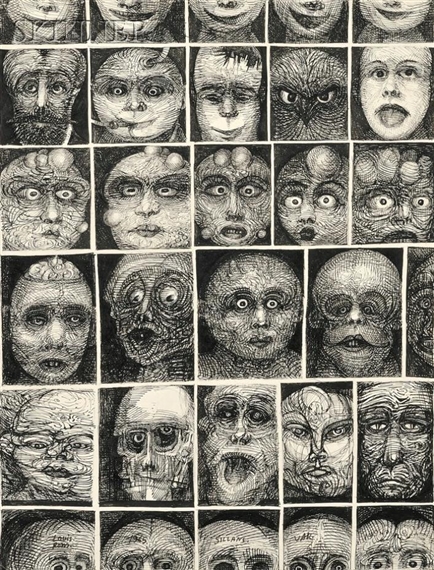
McCrae and Costa (1989) even found value in the MBTI, observing that “from the psychometric perspective, … the MBTI may be looked upon as an advance over Jung’s largely untested speculations” (p. 17). Finally, they presented their assessment tool as complementary to the MBTI, not contradictory of it:
Correlational analyses showed that the four MBTI indices did measure aspects of four of the five major dimensions of normal personality. The five-factor model provides an alternative basis for interpreting MBTI findings within a broader, more commonly shared conceptual framework. (McCrae & Costa, 1989, p. 17)
However, implicit in Costa and McCrae’s work is a restrictive definition of consciousness—an assumption that consciousness as reflexive awareness is accessible to self-report, and by extension, that the traits the Big Five purports to measure are also conscious. This assumption omits a crucial aspect of consciousness—intentionality—and it is not clear that the five factors are equally intentional, for example, Neuroticism. Consciousness and the unconscious are not as easily divisible as psychometricians would have us believe; they coexist on a spectrum. It is possible to become more reflexively aware of the incursions of unconscious influences, that is, more conscious of them in the self-report sense, even if they are still unconscious in the sense of arising autonomously, without intention. This creates the curious situation which individuals can observe in themselves: reacting, being overtaken by an idea or emotion without seeming to have much choice in the matter. Such self-observation is the point of any psychotherapy: to become more aware of one’s unconscious aspects in order to integrate them. Despite its near-total rejection by academic psychology, Jung’s typology continues to attract scholars, psychotherapists, and researchers because it initiates a process of self-discovery by the subject that enables a process of self-transformation.
Subjectivity Redeemed
One of the greatest achievements of Psychological Types is the rescue of the concept of subjectivity from its pejorative connotations. The APA Dictionary includes the following definition of “subjectivity”: “in empirical research, the failure to attain proper standards of objectivity” (American Psychological Association, n.d.). Jung (1921/1971) saw the rejection of subjectivity as yet another example of the one-sidedness of Western culture: “It is characteristic of our present extraverted sense of values that the word ‘subjective’ usually sounds like a reproof” (¶ 622). Jung reframed the term subjectivity as characterizing the prioritization of the psychological mechanism of introversion, a mental state that alternates with its opposite attitude that focuses on objectivity, each as necessary as the two chambers of the heart (¶ 6). Jung (1914/2014) maintained that science’s need for objective methods was, although a valuable goal, not realizable in the practice of psychology (¶ 395). The field of psychology has made significant advances by developing ingenious methods to ascertain objective results, even while many researchers share Jung’s evaluation of subjectivity as necessary to healthy psychological functioning and inherent in the psychological endeavor (Gough & Madill, 2012; Mascolo, 2016).

Although psychology is now in a post-postmodern phase, it still exhibits the heterodoxy associated with that movement. Whether psychology is mature enough to qualify for Kuhn’s term paradigm, the divergence of the two perspectives on types and traits may represent one more stage of evolution. To consider one or the other heretical and inherently unscientific is tantamount to disenfranchising many subdisciplines of psychology. These ways of approaching psychological knowledge do not have to be mutually exclusive. In fact, a comparison made of idiographic and nomothetic methods found some interesting results. When subjects were assessed daily for ninety days using items intended to reflect the Big Five, indeed, the five-factor structure emerged. However, when an idiographic method was used, “the five-factor structure was not found for even one participant” (Beltz et al., 2016, p. 451). Beltz’s team observed that “where there is heterogeneity across participants and time, only idiographic analyses offer accurate results that reflect the dynamic psychological processes being studied” (p. 450). Beltz’s team designed and advocated for a combined nomothetic and idiographic approach to provide the most complete picture for both research and clinical purposes. There is a strong case for convergence and consideration of both sides, which is very much in accordance with Jung’s aim of transcending opposites. If anything, the next step needed to advance a science of personality is not a paradigm shift but paradigm unification. Ironically, the pathway to greater objectivity is via inter-subjectivity: only by considering all perspectives can we remove ourselves from any one of them.
References
American Psychological Association. (n.d.). In APA dictionary of psychology. Retrieved December 8, 2021, from https://dictionary.apa.org/
Beltz, A. M., Wright, A. G., Sprague, B. N., & Molenaar, P. C. (2016). Bridging the nomothetic and idiographic approaches to the analysis of clinical data. Assessment, 23(4), 447–458. https://doi.org/10.1177/1073191116648209
Berry, F. M. (1984). An introduction to Stephen C. Pepper’s philosophical system via world hypotheses: A study in evidence. Bulletin of the Psychonomic Society, 22(5), 446–448. https://doi.org/10.3758/BF03333873
Billig, M. (2008). The hidden roots of critical psychology: Understanding the impact of Locke, Shaftesbury and Reid. Sage Publications.
Cambridge Dictionary. (n.d.) Cambridge University Press. Retrieved December 8, 2021 from https://dictionary.cambridge.org/dictionary/english/
Center for Applications of Psychological Type. (n.d.). The forms of the MBTI® instrument. https://www.capt.org/mbti-assessment/mbti-forms.htm
Cronbach, L. (1975). Beyond the two disciplines of scientific psychology. American Psychologist, 30(2), 116–127. https://doi.org/10.1037/h0076829
Cowles, H. (2020). The scientific method: An evolution of thinking from Darwin to Dewey. Harvard University Press.
Desson, S. (2017). Development of an integrated adaptive and maladaptive personality model for measuring the Big Five [Doctoral dissertation, University of Westminster]. Westminster Research.
DeYoung, C. G. (2010). Toward a theory of the Big Five. Psychological Inquiry, 21(1), 26–33. https://doi.org/10.1080/10478401003648674
DeYoung, C. G. (2015). Cybernetic big five theory. Journal of Research in Personality, 56, 33–58. https://doi.org/10.1016/j.jrp.2014.07.004
Franić, S., Borsboom, D., Dolan, C. V., & Boomsma, D. I. (2014). The big five personality traits: Psychological entities or statistical constructs? Behavior Genetics, 44(6), 591–604. https://doi.org/10.1007/s10519-013-9625-7
Goldberg, L. R. (1993). The structure of phenotypic personality traits. American Psychologist, 48(1), 26–34. https://doi.org/10.1037/0003-066X.48.1.26
Gough, B., & Madill, A. (2012). Subjectivity in psychological science: From problem to prospect. Psychological Methods, 17(3), 374–384. https://doi.org/10.1037/a0029313
Green, B. (2013, July). How the Higgs Boson was found. Smithsonian Magazine. https://www.smithsonianmag.com/science-nature/how-the-higgs-boson-was-found-4723520/
Harvey, R. J., Murry, W. D., & Markham, S. E. (1995, May). A “Big Five” scoring system for the Myers-Briggs type indicator [lecture]. Conference of the Society for Industrial and Organizational Psychology, Orlando, FL, United States.
Hawthorne, J. (2018, March 19). Inductive logic. In E. N. Zalta (Ed.), The Stanford encyclopedia of philosophy (Spring 2021 ed.), Stanford University. https://plato.stanford.edu/archives/spr2021/entries/logic-inductive/
John, O. P., & Srivastava, S. (1999). The Big Five trait taxonomy: History, measurement, and theoretical perspectives. In L. A. Pervin & O. P. John (Eds.), Handbook of personality: Theory and research (pp. 102–138). Guilford Press. http://jenni.uchicago.edu/econ-psych-traits/John_Srivastava_1995_big5.pdf
Johnson, D. A. (1993, July 6-11). The Myers-Briggs Type Differentiation Indicator measures the Big Five [Conference session]. Association for Psychological Type X Biennial International Conference, Newport Beach, CA, United States
Jones, R.A. (2007). Jung, psychology, postmodernity. Routledge.
Jones, R.A. (2013). Jung’s “psychology with the psyche” and the behavioral sciences. Behavioral Sciences (Basel, Switzerland), 3(3), 408-17. https://www.ncbi.nlm.nih.gov/pmc/articles/PMC4217588/
Jung, C. G. (1916/1966). The structure of the unconscious. In Two essays on analytical psychology (R. F. C. Hull, Trans.). In H. Read et al. (Eds.), The collected works of C. G. Jung (Vol. 7, 2nd ed.). Princeton University Press.
Jung, C. G. (1914/2014). On psychological understanding. In The psychogenesis of mental disease (R. F. C. Hull, Trans.). In H. Read et al. (Eds.), The collected works of C. G. Jung (Vol. 3). Princeton University Press.
Jung, C. G. (1921/1971). Psychological types (R. F. C. Hull, Trans.) In H. Read et al. (Eds.), The collected works of C. G. Jung (Vol. 6). Princeton University Press.
Jung, C. G. (1963). Memories, Dreams, Reflections (R. Winston & C. Winston, Trans. A. Jaffe Ed.). Pantheon Books.
Kuhn, T. S. (1962). The structure of scientific revolutions. University of Chicago Press.
Kuhn, T. S. (1977). Second thoughts on paradigms (2nd ed.). University of Illinois Press.
Lewis, M. (2021). The premonition: A pandemic story. W. W. Norton & Company.
Little, B. (2008). Personal projects and free traits: Personality and motivation reconsidered. Social and Personality Psychology Compass, 2(3), 1235–1254. https://doi.org/10.1111/j.1751-9004.2008.00106.x
Luyten, P., Blatt, S. J., & Corveleyn, J. (2006). Minding the gap between positivism and hermeneutics in psychoanalytic research. Journal of the American Psychoanalytic Association, 54(2): 571–610. https://doi.org/10.1177/00030651060540021301
Mascolo, M. F. (2016). Beyond objectivity and subjectivity: The intersubjective foundations of psychological science. Integrative Psychological and Behavioral Science, 50(4), 543–554. https://doi.org/10.1007/s12124-016-9357-3. PMID: 27469007
Mayrhofer, R., Kuhbandner, C., & Lindner, C. (2021, January 12). The practice of experimental psychology: An inevitably postmodern endeavor. Frontiers in Psychology. https://doi.org/10.3389/fpsyg.2020.612805
McCrae, R. R., & Costa, P. T., Jr. (1989). Reinterpreting the Myers-Briggs Type Indicator from the perspective of the five-factor model of personality. Journal of Personality, 57(1):17–40. https://doi.org/10.1111/j.1467-6494.1989.tb00759.x
McCrae, R. R., & Costa, P. T., Jr. (2003). Personality in adulthood: A five-factor theory perspective (2nd ed.). Guilford Press. https://psycnet.apa.org/record/2003-04577-000
McPhetres, J., Albayrak-Aydemir, N., Barbosa Mendes, A., Chow, E. C., Gonzalez-Marquez, P., Loukras, E., Maus, A., O’Mahony, A., Pomareda, C., Primbs, M. A., Sackman, C. J. R., & Volodko, K. (2020). A decade of theory as reflected in Psychological Science (2009-2019). PLOS One, 10.1371/journal.pone.0247986.
Michell, J. (2000). Normal science, pathological science and psychometrics. Theory & Psychology, 10(5), 639–667. https://doi.org/10.1177/0959354300105004 639–667.
Michell, J. (2008). Is psychometrics pathological science? Measurement: Interdisciplinary Research and Perspectives, 6(1-2), 7–24. https://doi.org/10.1080/15366360802035489
Mischel, M., & Shoda, S. (2008). Toward a unified theory of personality: Integrating dispositions and processing dynamics within the cognitive-affective processing system. In O. P. John, R. W. Robins, & L. A. Pervin (Eds.), Handbook of personality: Theory and research (pp. 208–241). Guilford Press.
Murray, J. B. (1990). Review of research on the Myers-Briggs Type Indicator. Perceptual and Motor Skills, 70(3, Pt 2), 1187–1202. https://doi.org/10.2466/PMS.70.4.1187-1202
Myers, K. D., Quenk, N. L., & Kirby, L. K. (1995). The MBTI Comfort-Discomfort dimension is not a measure of NEO-PI Neuroticism: A position paper. Journal of Psychological Type. 35, 3–9.
Online Etymology Dictionary. (n.d.) Retrieved December 8, 2021,from https://www.etymonline.com/word/
Open Science Collaboration. (2015, August 28). Estimating the reproducibility of psychological science. Science. 349(6251). https://www.science.org/doi/10.1126/science.aac4716
Owen, R. (2017, April 6-8). What is type anyway? [Conference session]. British Association for Psychological Type Conference, Great Missenden, United Kingdom. https://www.youtube.com/watch?v=huqbymKdQ0Q
Russell, B. (2004). History of western philosophy. Routledge.
Ryan, G. (2018). Introduction to positivism, interpretivism and critical theory. Nurse Researcher, 25(4), 41–49. http://doi.org/10.7748/nr.2018.e1466
Sample, I. (2007, November 17). The god of small things. The Guardian.
Schraube, E. & Osterkamp, U. (Eds). (2013). Psychology from the standpoint of the subject: Selected writings of Klaus Holzkamp (A. Boreham & U. Osterkamp, Trans.). Palgrave Macmillian.
Scotland, J. (2012). Exploring the philosophical underpinnings of research: Relating ontology and epistemology to the methodology and methods of the scientific, interpretive, and critical research paradigms. English Language Teaching, 5(9), 9–16. http://doi.org/ 10.5539/elt.v5n9p9
Shamdasani, S. (2003). Jung and the making of modern psychology: The dream of a science. Cambridge University Press.
Smedslund, J. (2016). Why psychology cannot be an empirical science. Integrative Psychological and Behavioral Science, 50(2), 185–195. https://doi.org/10.1007/s12124-015-9339-x
Stein, R., & Swan, A. B. (2019). Evaluating the validity of Myers-Briggs Type Indicator theory: A teaching tool and window into intuitive psychology. Social and Personality Psychology Compass, 13(2), 1–11. https://doi.org/10.1111/spc3.12434
Stevens, S. S. (1946). On the theory of scales of measurement. Science, 103(2684), 677–680.
https://www.science.org/doi/10.1126/science.103.2684.677
Trendler, G. (2009). Measurement theory, psychology, and the revolution that cannot happen. Theory & Psychology 19(5), 579–599. https://doi.org/10.1177/0959354309341926
Watson, J. B. (1913). Psychology as the behaviorist views it. Psychological review, 20(2), 158–177. https://doi.org/10.1037/h0074428
Wegner, D. (1994). Ironic processes of mental control. Psychological Review, 101(1), 34–52. https://psycnet.apa.org/record/1994-16255-001
Wilt, J., & Revelle, W. (2009). Extraversion. In M. Leary, & R. H. Hoyle (Eds.), Handbook of individual differences in social behavior (pp. 27–45). Guilford Press.
Images
[a y s h] (2019-2020). How do you draw a line under pressure? electric lines 2. Retrieved from wikiart.org
Battiss, W. (n.d.). Multi-legged man. Retrieved from wikiart.org
Drexler, R. (1965). Study for men and machines. Retrieved from wikiart.org
Fish, J. (1974). 4 glasses. Retrieved from wikiart.org
Peri, P. L. (1921). Room (space construction). Retrieved from wikiart.org
Pons, L. (1965). Le voisinage. Retrieved from wikiart.org
Ryabchenko, V. (2008). Copperas. Retrieved from wikiart.org
Soutter, L. (1942). Les héros. Retrieved from wikiart.org
Wilson, M. (1965). Snowflake series (pink netting). Retrieved from wikiart.org
This article was drawn in part from two conference presentations: “The Convergence of Jungian Typology and Academic Psychology” by Carol Shumate, British Association of Psychological Type, Type Centenary Symposium, June 2, 2021; and “100 years of Misunderstanding: Type and Academia” by Richard Owen, British Association of Psychological Type Conference, April 15, 2021 [posted October 6, 2021].





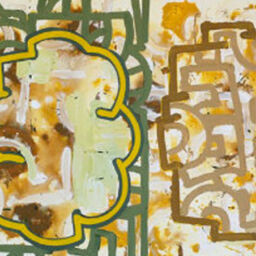
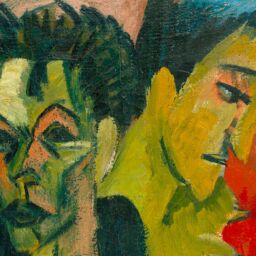











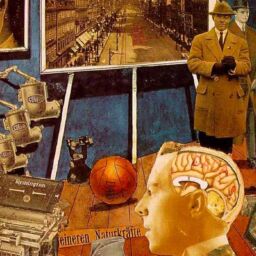
It’s great to hear from you, Gregory, as someone who has actually been on the front lines of the psychology wars. I am reminded of the dour comment that the Nobel-winning German physicist Max Planck made: “Science progresses one funeral at a time.” But I am encouraged by the words of William James, often considered the father of American psychology, a man whose work influenced Jung greatly. James made a comment in a speech in Boston in 1906: “First, a new theory is attacked as absurd; then it is admitted to be true, but obvious and insignificant; finally it is seen to be so important that its adversaries claim that they, themselves, discovered it.”
I am an APA card carrying psychologist and a firm believer in the need for empirical evidence to advance the field. However, I have found the Jungian/MBTI framework so valuable for self-understanding as well as a tool for helping my clients (organizations, leaders) in my work with them for 50 years now. I have been appalled by the flippant criticisms of the MBTI in academia and in the popular press. The framework and especially the use of the framework by practitioners clearly does deserve some chiding but the “all or nothing” approach to examine the issues has really bugged me and been the subject of many debates with colleagues of mine. I think our biggest “sins” lie in the “shoot from the hip (but intuitively pleasing) pronouncements regarding what type can explain. And I do have reservations about using Whole Type even though I do know that the interactions between/among the individual paired preferences produce important insights. The difficulties in conducting good empirical research using Whole Type continues to haunt me.
–Greg Huszczo, Emeritus Professor of Organizational Behavior and Development